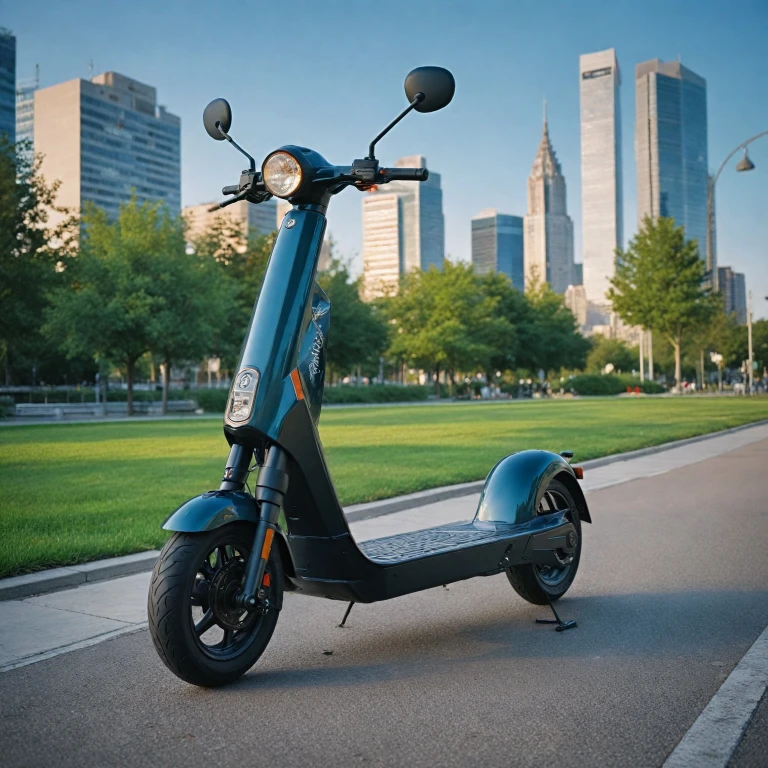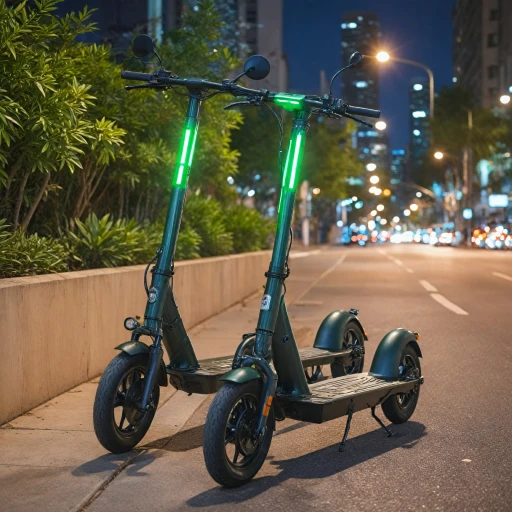How Battery Charged Scooters Work
The Mechanics of Battery-Powered Mobility
Electric scooters have become an increasingly popular transportation option for many people seeking efficient and sustainable mobility. At the core of these electric scooters is the powerful yet compact battery. Understanding how these batteries work is crucial to maximizing the performance and lifespan of your scooter. Battery-powered scooters rely on rechargeable battery packs to function. For most models, lithium-ion batteries are the preferred choice due to their high energy density and longer battery life compared to lead-acid ones. These batteries work by storing electric energy and providing the necessary power to the motor when the scooter is in use. When it comes to charging, the process is generally straightforward. Most scooters come with a dedicated battery charger which connects to a charging port on the scooter. It’s essential to use the original charger to ensure the battery is charged efficiently and safely. Charging times vary based on the battery capacity, but typically, a full charge can take anywhere from 3 to 8 hours. Scooter batteries impact the overall performance, including speed and range. Electric scooters can cover various ranges depending on the capacity of the battery and the scooter's efficiency. On average, a fully charged scooter can travel between 10 to 30 miles, but this can vary based on factors such as the rider's weight, the terrain, and the scooter's speed. While the technology behind these batteries continues to advance, it’s important to practice good maintenance habits to prolong battery longevity. This includes regular charging and avoiding keeping the battery at a low charge for extended periods. Ultimately, understanding the power source of your electric scooter can help make informed decisions about the best product that suits your needs, offering both convenience and value for money.Benefits of Using Battery Charged Scooters
Advantages of Embracing Battery-Powered Mobility
Battery charged scooters offer a range of benefits that make them an attractive option for modern commuting. The primary advantage is their environmentally friendly nature. Unlike traditional gas-powered scooters, electric scooters produce zero emissions, contributing to cleaner air and reducing your carbon footprint.
Another significant benefit is cost efficiency. With the rising price of fuel, electric scooters remain economical. Charging a scooter is generally cheaper than refueling, and the maintenance costs tend to be lower. There's no need for oil changes or fear of mechanical failure due to the simplicity of electric motors. Moreover, free delivery is often available for these products, adding to their affordability.
When it comes to convenience, electric scooters shine. Equipped with a battery charger, these scooters can be easily charged using any standard socket. The typical charging time may vary from a few hours to overnight, but the ability to charge at home makes it incredibly convenient. Some scooters, like mobility scooter models, also come with swappable battery packs, so you can easily extend your scooter’s range.
In terms of performance, electric scooters can achieve impressive speed and range capabilities. Depending on the model and battery capacity, you can expect to travel several miles on a single charge, with some high-end lithium-ion batteries offering extended range and faster charging times. This makes them well-suited for both short city commutes and longer rides.
Overall, the benefits of using battery charged scooters—whether it's the environmental impact, economic savings, or ease of use—highlight their growing popularity and potential as a sustainable mode of transport. Understanding the future of battery technology in scooters and ensuring the battery life is maintained properly can maximize these benefits, offering a rewarding and sustainable travel solution.
Choosing the Right Battery for Your Scooter
Factors to Consider When Selecting a Scooter Battery
Choosing the right battery for your electric scooter is crucial for maximizing performance and longevity. Here are some key factors to consider:
- Battery Type: Most electric scooters use lithium-ion batteries due to their efficiency and lightweight nature. However, lead-acid batteries are also available and may be more affordable, though heavier and less efficient.
- Battery Capacity: Measured in amp-hours (Ah), battery capacity determines how far you can travel on a single charge. A higher capacity means a longer range, allowing you to cover more miles without needing to recharge.
- Charging Time: Consider how long it takes to fully charge the battery. Faster charging times can be more convenient, especially if you use your scooter frequently.
- Price: While lithium-ion batteries are more expensive, they offer better performance and longer lifespan compared to lead-acid options. Balance your budget with your performance needs.
- Compatibility: Ensure the battery is compatible with your scooter's specifications, including the voltage and the type of battery charger required.
Understanding these factors can help you make an informed decision when selecting a battery. For more insights into the power dynamics of electric scooters, you might want to explore this comprehensive guide.
Maintenance Tips for Battery Longevity
Extending Battery Life with Proper Maintenance
To ensure that your electric scooter performs optimally over a long time, it's crucial to focus on the health and longevity of the scooter battery. Regular maintenance not only extends the battery life but also enhances the overall performance and range of your scooter.
Here are some practical tips for maintaining your battery to ensure it stays fully charged and at peak performance:
- Regular Charging: Charge your electric scooter frequently, even if the battery isn't completely drained. This prevents deep discharges that can reduce the lifespan of lithium ion and lead acid batteries.
- Proper Charging Techniques: Always use the battery charger that came with your product. A compatible charger ensures the correct voltage and prevents overcharging, which can damage the battery.
- Monitor Charging Time: Avoid leaving the scooter charging overnight or for extended periods without supervision. Most batteries reach full charge within a few hours, and overcharging can lead to reduced capacity and efficiency.
- Store at Optimal Conditions: If you're not using your electric scooter, especially during the colder months, store it at room temperature. Extreme temperatures can negatively affect battery capacity and ultimately its lifespan.
- Keep the Charging Port Clean: Dirt or debris in the charging port can obstruct proper connections, leading to inefficient charging sessions. Regularly clean and inspect the port for any blockages.
Adhering to these maintenance practices not only ensures the scooter is ready when you are but can also help prevent unexpected expenses related to battery replacement or repairs. The right approach to care can significantly affect the long-term value and performance of electric scooters, making it a crucial area of focus for enthusiasts and casual users alike.



